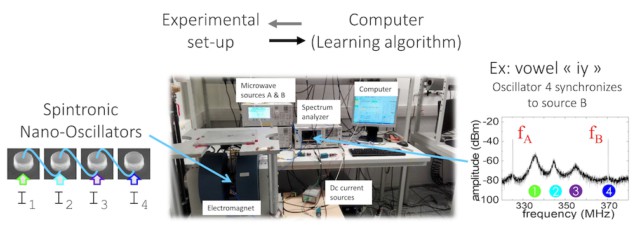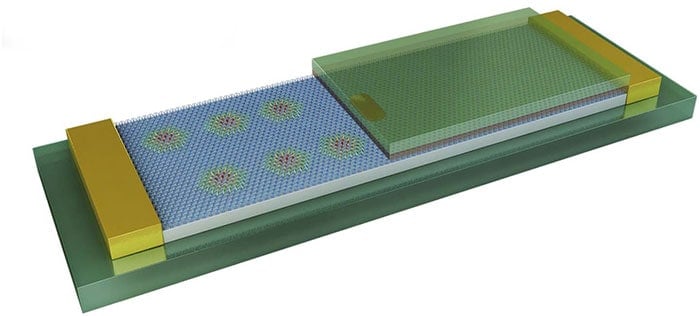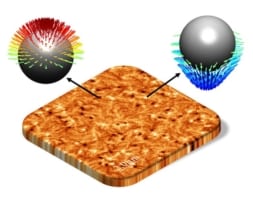
A network of four spintronic oscillators can successfully be trained to recognize different spoken vowels, says a team of researchers at C2N and CNRS/Thales in France and AIST in Japan. Each of the nanoscale devices in the network acts like a nano-neuron and behaves just like its biological counterpart in that it can fire rhythmically in a controlled way and even oscillate in unison with the other devices present. The new network is an important step forward for neuromorphic computing based on spintronics.
Neuromorphic, or brain-inspired, computers aim to mimic the biological neural system at the physical level of neurons (brain nerve cells) and synapses (which are the connections between neurons) and will rely on neuronal-like networks rather than series of binary 1s and 0s. As well as being potentially much faster and energy efficient than conventional computers, such machines might also be able to learn how to perform new tasks rather than just being pre-programmed to do them.
The human brain contains a staggering 100 billion neurons, each of which receives electrical inputs from some of its neighbours and then “fires” an electrical output to others when the sum of the inputs exceeds a certain threshold. This process, also known as “spiking”, can be reproduced in nanoscale devices such as spintronic oscillators and this is why researchers have recently started looking into these structures to make neuromorphic computers.
Magnetization precession at microwave frequencies
The new neuromorphic network made by Julie Grollier and Damien Querlioz and colleagues at CNRS, Université Paris-Sud and Université Paris-Saclay, consists of four spintronic devices measuring 375 nm in diameter and a free layer of iron-boron Each device consists of a non-magnetic material layer sandwiched between two ferromagnetic material layers, with each ferromagnetic layer being magnetized in a different direction.
When a voltage is applied to the device, spin-polarized current flows from one magnetic layer – across the non-magnetic layer – into the second magnetic layer. This current exerts a torque in the second magnetic layer, making its magnetization precess at microwave frequencies. This precession can be monitored by measuring an oscillating voltage that develops across the device.
Coupled oscillators
The researchers connected the four spintronic oscillators together using millimetre-sized electrical wires. “In such a set-up, the microwave current generated by each oscillator propagates in a loop and in turn influences the frequency of the other oscillators,” explains Grollier. “The oscillators are thus coupled.”
To test their network, they then recorded vowels spoken by 37 different volunteers, digitized these recordings and transformed them using Fourier analysis into two frequencies. These were subsequently accelerated a hundred times and fed into the nano-oscillators using a nano-antenna in the form of high-amplitude microwave signals.
The oscillating voltage is analysed by a computer running a real-time machine-learning program. “Our system can correctly recognize different vowels and can classify them because each vowel leads to a specific synchronized configuration of the oscillators in the network – regardless of the person who pronounced it. For example, the sound “ih” synchronizes a single oscillator, while “ah” synchronizes two oscillators, and so on.

Magnetic skyrmions could help make low-energy artificial ‘brains’
“This behaviour is not innate to the system, and we must train the network to achieve it,” stresses Grollier. “To do this, we gradually modify the frequency of each of the oscillators by adjusting the DC current flowing through it according to the learning law in the machine-learning program.”
The researchers, reporting their work in Nature 10.1038/s41586-018-0632-y, say that they would now like to develop algorithms that allow their oscillator network to learn more complex tasks, such as recognizing images. “We would also like to make a chip containing a larger number of these spintronics oscillators to exploit their rich physics for future computing applications,” Grollier tells Physics World.



